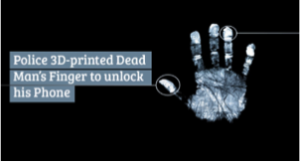Nearly 110 Data Centers On The Market
Nearly 110 cloud and managed hosting data centers could be sold during the second half of 2016, if CenturyLink and Verizon Communications each have their way. Indeed, CenturyLink has nearly 60 data centers up for sale. And Verizon appears to have nearly 50 data centers up for sale.
During an earnings call yesterday, CenturyLink said its data center sale process could wind up in Q3 or perhaps Q4 2016. Meanwhile, Verizon made a similar statement result in no asset sales.
In other words — if the price isn’t right, neither company intends to sell off their data centers. Both companies apparently have attracted bidders for their respective cloud, managed hosting and colocation centers. Verizon apparently is seeking at least $2.5 billion for its data center businesses. It’s unclear how much CenturyLink is seeking.
If these “Big Boys” are selling off their Data Centers, it makes you wonder how profitable all this Cloud business is and, if the Cloud is not profitable, how can it be sustainable?
Locky Ransomware is Now the Biggest Email-Borne Threat
During the first quarter of 2016, the biggest email-borne threat was the Dridex banking Trojan; however, quarter 2 has seen Locky take over number one spot. Locky, which was first discovered in February, has become highly prevalent and is now involved in 69% of email attacks involving malicious attachments. In Q1 Locky was involved in 24% of email-borne attacks on organizations. Both malware variants are delivered via JavaScript files attached to malicious spam email messages.
New ransomware is also being developed at an alarming pace. Since December 2015, ransomware variants have increased between 5 and 6 fold according to the latest quarterly threat report from Proofpoint.
While vast quantities of spam emails are still being sent out at random, highly personalized campaigns are becoming much more common. Previously these tailored spam email campaigns have involved far lower volumes of emails. Now those campaigns involve tens of thousands of email messages.
There was a brief hiatus in Locky spam email campaigns towards the end of May/Start of June; however, activity resumed on June 19 and large campaigns are being conducted once again. Earlier this year, Locky and Dridex were being sent out in spamming campaigns involving hundreds of millions of messages every day. Activity has not resumed at the same levels although malicious spam volume is increasing dramatically.
Given the rise in malicious email volume, email gateway security solutions should be deployed to reduce the risk of malicious emails being delivered to end users. Anti-spam solutions should be configured to block executable files (.exe) and JavaScript files (.js) to reduce the risk of ransomware and malware attacks.
Your biggest risk is with your least trained staff member.
Police Unlock Dead Man’s Phone With Printed Fingerprints
 Dead men tell no tales, but their phones might.
Dead men tell no tales, but their phones might.
Early last month, two detectives walked into the lab of Anil Jain, a professor of computer science and engineering at Michigan State University. They had heard of Jain's cutting-edge work in fingerprint recognition and wanted his help in a murder investigation.
The detectives brought the victim's locked Samsung Galaxy S6 phone and a copy of his fingerprints, as he had been previously arrested. The investigators said they believed his phone might hold clues to who killed him and asked Jain to help them get inside the phone by overcoming the fingerprint scanner lock.
Jain and his team — doctoral student Sunpreet Arora and postdoctoral student Kai Cao — spent the following several weeks tinkering with a solution. This week, they found one that worked.
Setting off to create a successful fingerprint key, Jain knew that the models would have to be able to conduct electricity. Real human skin is conductive, similar to copper or silver.
Jain says that the differences in the ridges and valleys in our fingerprints create different electrical currents, which can be converted into unique images on the sensors of our phones — this is what powers the new biometric phone locks.
"The fingerprints they provided us were just ink on paper, which doesn't have a conductive property," Jain says. "So the first thing we tried was to print the fingerprints on a special conductive paper, just like a photographic paper."
The conductive paper prints didn't work, so the researchers moved to Plan B: create 10 3-D printed replicas of the victim's fingertips, complete with copies of his fingerprints embedded onto them. To make them conductive, another machine was used to apply a micron-level coating of silver or copper to test which would work the best.
This method was much more expensive and time-consuming than the 2-D alternative. It took 40 minutes per finger on a $250,000 machine to print each fingertip, Jain says. From there, the fingertips went into a $600,000 machine to get the metallic coating.
Despite the high price tag, the 3-D fingertips didn't work either. Jain says the simple, conductive paper prints were still on his mind.
For their third attempt, the researchers used an image-enhancement algorithm specific to the unique flow pattern of fingerprints and created more precise representations of each print. They printed the high-quality fingerprints on the same conductive paper and called the detectives in for a test.
On Monday afternoon, the detectives and the researchers stood over the replica fingerprints laid out on a table and tested the final copies on the victim's phone. Jain and his team had printed all 10 digits just in case, but the phone unlocked after they tried the first, most common one, the right thumb.
Is the IoT a "Clear And Present Danger"?
According to a U.S. government report, the “Internet of Things” could deliver a disabling global attack. With smart cars, smart homes and new apps that reach into every nook and cranny of our personal lives, the IoT poses greater risks to our safety than ever before. And revealing more about your life than a novelist, it takes the invasion of privacy to new heights. True, it may help folks live longer, healthier lives. And it may boost food production. Or even improve job and lifestyle options for some. Yet the question isn't whether it’s good or not … it's how do we deal with it? One thing is for sure: good or bad, buckle up because here it comes!
-ITworld.com
Imagine owning the domain rights to Google.com – even for just 60 seconds…
When Babson College MBA student Sanmay Ved happened to notice the google.com domain up for sale, he figured why not go ahead and try to buy it. To his huge surprise, the sale actually went through! He had just purchased google.com for the princely sum of $12. It didn’t take Google long to become aware that something had gone horribly wrong – less than 60 seconds, in fact. They fired off an e-mail to Sanmay, telling him they’d cancelled his order and refunded his $12. As an afterthought, Google sent Sanmay a little spiff for his cooperation: $6,000.13, to be exact. If you squint, you might see that the number spells “Google.”
-DigitalTrends.com
Betting The Farm Your Backups Are Safe?
 It’s only natural that when you hear of a disaster you think it couldn’t happen to you.
It’s only natural that when you hear of a disaster you think it couldn’t happen to you.
That’s why, even though we’re told constantly that we should diligently maintain a working backup recovery system because all your company’s data could be lost in an instant, we tend to brush off the advice.
Yet disasters do happen when you least expect them, and they can happen to anyone. So to illustrate the importance of staying on top of your data recovery system, here is a tale of “data gone wrong.” After all, there’s nothing quite like a good horror story to inspire action!
Toy Story 2: Gone!
One morning in 1998, the animators at Pixar Studios working on Toy Story 2 noticed that Woody’s hat started disappearing. Then his boots… Then all of Woody – gone! Other characters started disappearing too.
A rogue command in their system had started wiping out data. No problem, the team thought, as they pulled out the backups. Unfortunately, the backups were bad and only had data from 10 months ago.
Luckily, one of the project leaders who’d just had a baby had recently asked to have a copy of the film installed at her house. So they drove to her house and escorted her computer back to the studios “like an Egyptian Pharoah.” And as we now know, Toy Story 2 was saved.
Moral: It’s not enough to simply run backups. You need to periodically check to make sure the data is actually getting backed up and nothing is corrupted.
Prison Time for IRS "Get Transcript" Fraudsters
(July 27, 2016)
Two people have been sentenced to prison for their roles in a scheme that exploited a flaw in the US Internal Revenue's (ITRS's) "Get Transcript" tool. Anthony Alika and Sonia Alika laundered more than US $1 million, using information stolen from the IRS site to file fraudulent income tax returns and obtain refunds. Anthony Alika was sentenced to nearly seven years in prison; Sonia Alika was sentenced to nearly two years in prison. The couple was also ordered to pay more than US $2 million in restitution to the IRS.




